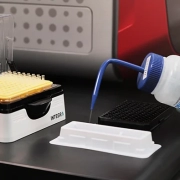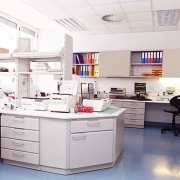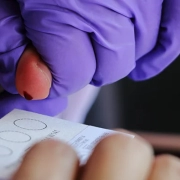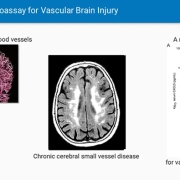New Resource: Biocompare ebook Offers Useful Tips for Improving Cytokine Detection
Articles review key studies and offer advice about working with multiplex technology
Cytokine detection is crucial for research aiming to characterize inflammation and immune response and to identify key biomarkers. Yet because there are so many different cytokines, traditional single-plex ELISA tests can be too time-consuming and require too much sample volume to be a feasible approach.
[thumbnail]
That’s why many scientists interested in quantifying cytokines have turned to Luminex’s xMAP® Technology, since bead-based multiplexing allows for the simultaneous analysis of as many as 500 analytes in a single reaction, making quick work of cytokine detection and generating a wealth of information from a small volume of sample.
Streamlining cytokine detection workflows
A new ebook published by Biocompare focuses on improving cytokine detection workflows, with several valuable articles designed to help scientists streamline their protocols and produce higher-quality data. If cytokine detection is important for your research, we recommend checking out the entire ebook. For your convenience, we’ve rounded up a few highlights.
Comparison study: xMAP Technology vs. planar electrochemiluminescence kits
In a comparison study conducted at the Washington University School of Medicine, two multiplex immunoassay tools were evaluated: xMAP Technology using the Luminex FLEXMAP 3D® system, and planar electrochemiluminescence (ECL) kits. By analyzing the results of the 19 cytokines common to both tests, the team determined that the FLEXMAP 3D system quantified all 19 cytokines in 55 samples tested, while the ECL kits failed to detect 7 of the 19 cytokines in more than 25% of samples.
Importance of lot-to-lot consistency in cytokine detection

For any biomarker analysis, results are only reliable when they are reproducible and directly comparable to other results generated by the same process. For cytokine detection, lot-to-lot consistency across kits is essential, particularly in longitudinal studies of immune factors. The ebook includes an article describing a study of two immunoassay performance indicators related to consistency, standard curve reproducibility, and sample measurement.
According to the article, the results demonstrated “the reliability of MILLIPLEX® Human Cytokine/Chemokine/Growth Factor Panel A for consistent assay performance, sensitivity, and reproducible measurement of immune factors in serum and plasma between different kit lots.”
Furthermore, there’s also a related article about how the MILLIPLEX Human Cytokine/Chemokine/Growth Factor Panel B offers a unique combination of 48 biomarkers that can be simultaneously analyzed in a small sample volume, with useful data about parallelism and sample detectability.
Choosing an automation vendor for cytokine detection
For researchers who run many cytokine detection experiments, workflow automation might be useful for scaling operations and reducing hands-on time. xMAP-based assays are amenable to an automated approach in laboratories that perform a high volume of assays. However, before choosing an automation vendor, consider some key steps: define your experimental goals, prepare a detailed assay protocol, measure your lab space, and list all consumables, instruments, and reagents used in your workflow. Having this information on hand can make discussions with vendors much more productive.
Learn more about xMAP multiplexing technology for a broad range of applications by downloading the free Biocompare eBook, “Improving Cytokine Detection.”
For Research Use Only. Not for use in diagnostic procedures.














